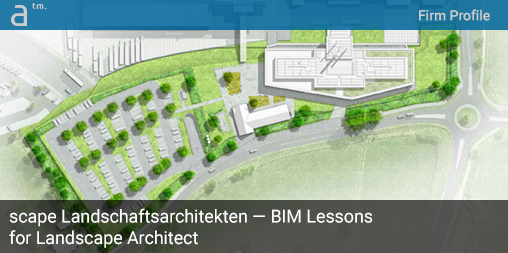Continued from page 1
BIM for Landscape—Germany Lessons
Matthias says that while his firm has developed BIM competencies—through intensive BIM projects like the successful Viega project—some clients in Germany are turning away from BIM. “You can think of the data as being useful to facilities management but most of the developers or investors are building to sell; they don’t have good workflows to make use of the BIM data so they are less interested in BIM,” says Matthias.

DESITE MD is software from Germany that handles BIM management, quality and project management. It works seamlessly in an Open BIM workflow with IFC and BCF. (image: scape / Architosh. All rights reserved.)
On the other hand, he says, “the big construction firms in Germany do try to set up the BIM processes for themselves, so it is not just the clients that ask for BIM workflows but the building professionals themselves.” This is turning out to be another reason why Matthias’ firm is pushing the BIM process internally for their projects, whether their clients want it or not. “It’s important that we deliver accurate 3D data-based plans and models so that the construction and manufacturing professionals can just take our data, create and manufacture what they need for the project, and load it into their trucks for the job site.”

Vectorworks Landmark contains all the tools that landscape architects need with full BIM and CAD capabilities. (image: scape / Architosh. All rights reserved.)
This touches on where Matthias says Vectorworks Landmark shines. “We chose Vectorworks years ago because it is very good at making attractive 2D plans, and useful for competitions.” He adds, “Vectorworks today has one of the very best 3D engines and is one of the best programs to handle 3D data.”
“We have lots of projects with difficult or complex height requirements,” he says. But the firm has proceeded well in using Vectorworks Landmark along with tools like DESITE MD to successfully manage this complexity.







Reader Comments
Comments for this story are closed